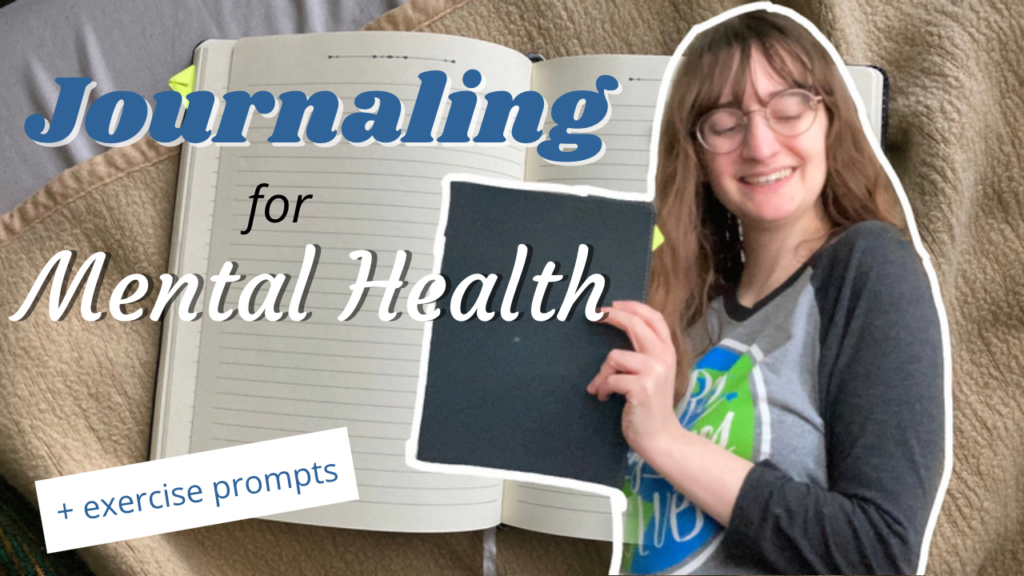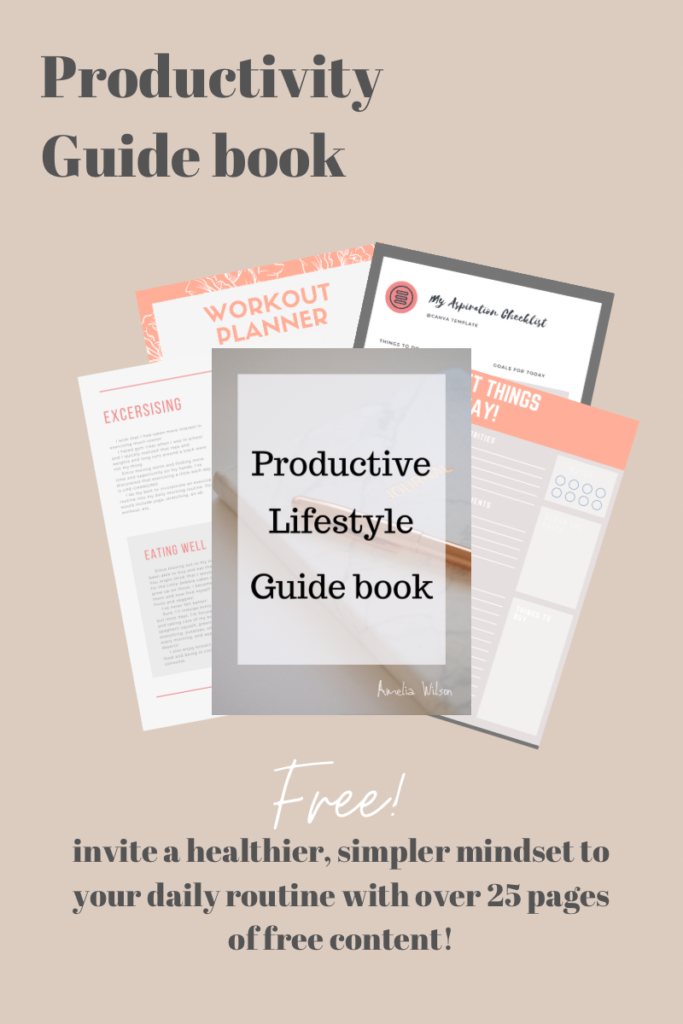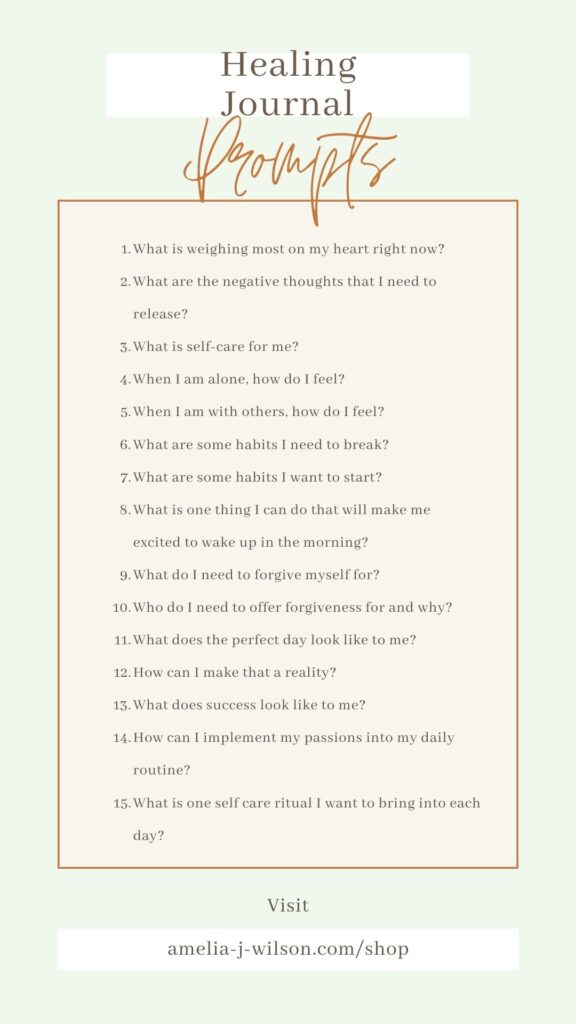As time goes on, the prevalence of mental health within culture as well as ever-growing societal acceptance of treating mental and emotional detriments as illnesses have greatly changed over the past few decades. The world is simply beginning to acknowledge mental health as a priority and old stigmas regarding the topic are slowly dissolving.
Still, this new climate remains challenging (and expensive) to navigate for most people. While many workplaces and schools have grown to offer six free therapy sessions, the quality can be a bit lacking.
Disclaimer: All of the views and opinions in this post are solely my own and are not sponsored. This post may include affiliate links, meaning I earn a commission through links at no cost to you.

As a person who struggles with mental health, I wanted to share a few “therapy tricks” that I think can help my readers.
And I’m doing this for free.
I don’t think we should put emphasis on people to spend money just to receive the help they need. Therefore, in today’s article, I’m going to be covering some of my best tips on using journaling for mental health as well as how to keep a mental health journal if you’ve never done so before.
Using Cognitive Behavioral therapy
Before we get into the makings of the mental health journal, I need to point out the science and understanding behind the entire exercise.
Journaling for mental health often aligns and relies on a method called cognitive behavioral therapy. For those of you who don’t know, CBT is a method of psychotherapy that encourages a person to analyze their present situation, mindset, and outside influences to help resolve an underlying problem.
There are several different kinds of CBT, each focusing on a different aspect/trigger to help you sort through your thoughts and decrease distortions. Some exercises include: nightmare rescripting, breathing and meditation, finding distortions, introspection, journaling, AND MANY MORE.
We’ll be using elements of cognitive behavioral therapy to help create a space within our journals for growth.

Why Journaling?
Now, you might be thinking, “why journaling? Why not use other CBT exercises?”
This is left up to preference. I personally value the written word and thoroughly enjoy writing as a means of self-expression and self-navigation. Since this is the area which I shine most, I’ll be covering this topic.
Additionally, studies have shown that journaling can have a profound impact on individuals’ mental states. Recently, I read Emotional Agility by Dr. Susan David. Her book included a passage about a test given to a group of people struggling with mental illness. The test encouraged participants in the study group to journal for 20 minutes a day and then fill out a questionnaire while the control group simply filled out the questionnaire. The study proved that even journaling 20 mins a day can help you clear up your mind, and offer solutions to your current situation. Many of the participants in the study group found that they could resolve, sort through, and challenge underlying PTSD disorders and depressive thoughts.
If you want to know more about journaling and its benefits of how to keep up with a journal, I encourage you to watch one or more of my journaling videos on YouTube.
Here are few:
Overall, the true aim of this exercise is to help you challenge toxic ideologies existing due to your mental health. By journaling with the intent of resolving or challenging these ideologies, you’ll be able to:
- Discover your distortions
- Better your memory recall
- Find the source of your troubles
- Collect and analyze thought patterns
- Create a cognitive organization system
How to use your journal
Now that you know exactly what we’re doing and why, it’s time to jump in on how to use your journal.
Above anything, I urge you to find a journal that feels right. Get a journal that has a cover design that you like, that has plenty of paper, that feels good to the touch, and which lays flat and easy to use. I discuss the best methods for finding a good journal in my video on journaling in 2021, but really, the goal is simply to get something that you’ll actually enjoy using.
Once you have your journal, use the below ideas to fill your pages!
Guided prompts
Guided prompts are a classic and easy-to-use journaling technique. This is the best place to start if you’re a beginner as the prompts lead you to a greater understanding of yourself and your situation.
I encourage beginners to look into 5-minute journals as these journals tend to focus on quick and simple exercises that better your perspectives in life. 5-minute journals help lead users into the habit of journaling if they aren’t already pursuing it.
For my more advanced readers, and really anyone eager to try something new, I will leave an exercise at the bottom of this post that you can try. The exercise is a series of guided journal prompts to help illuminate any distortions you may have at the moment.
Keep in mind, however, that journaling gets better the more you do it. The more time and frequency you give to your journal, the more likely you are to find those hidden distortions and toxic ideologies.

Word associations
One of my favorite methods of mental health journaling is to use word associations.
The idea of this exercise is to write down a word and then follow up with the first thoughts that come to your mind when you think of that word.
For example, if I wrote the word fear. What comes to mind?
What are some things you associate with fear?
To challenge these associations, what comes to mind with the word love. How do these two lists compare?
Sometimes, I use word associations when I feel like challenging my writing ability. I’ll test myself in using the word in a story or poem to heighten creativity. When I’m depressed, I often lack motivation or inspiration to curate engaging stories. Word associations often help me to break out of this slump.
Additionally, word associations are a great way to discover yourself. I find that I go through different “periods” with my mental health. In the past, I struggled with feeling unheard and ignored. The word “silence” helped me discover why I felt that way. Similarly, I’ve struggled very recently with “jealousy.” By giving these words a definition created by me, with examples from my own life, I can challenge my thought processes and discover areas where I have distorted the word’s true meaning.
Write to-do lists
To-do lists are another favorite of mine. I tend to stress out and worry very easily. It’s a part of who I am and I’ve come to terms with the fact that while I can’t eradicate those characteristics, I can nurture them.
Writing lists helps me to organize my thoughts and eliminates my worries. It also boosts my memory.
If you need inspiration on how to create more effective lists, I have a blog post on the topic that you can reference here.
Alternatively, writing lists doesn’t have to be about day-to-day chores. Create bucket lists like:
- travel bucket list
- List of your most wanted items right now
- List of your favorite home styles
- Fashion styles
- Birthday or Christmas gifts
- Food bucket list
It’s your journal. You get to write whatever you want!

Write down “worst case scenarios”
Something I learned about recently and want to explore more of is the act of writing down “worst-case scenarios.” This is an activity meant for people who are struggling with anxiety or who find themselves stressed and apprehensive about the future.
The idea of the exercise is to write a short story or list of events detailing what could happen if something does work out like you’d hoped. Here is an example I’ve done in the past:
Worry: I won’t be able to find an apartment to move to by the time my current lease ends.
Worst case scenario:
I’ll have to pack all of my stuff and place it in a U-haul. Then, I’ll put the majority of items in storage for about $20 a month. I’ll put my essentials and a few clothes in a suitcase and live at my parents house until I find a new place.
The interesting thing about this worst-case scenario for me is that it’s really not all that bad. In my head, the whole move seems stressful and unwelcome. But thankfully, I do have my parents to go back to and storage isn’t that expensive. Sure, I could list more fears about storage or work or family drama to make this a “worst” case scenario, but what I discovered is that this activity eliminates fear at the source.
Writing down worst case scenarios helps you:
- Discover flawed thinking patterns
- Find the places where you are exaggerating
- Realize that your situation isn’t as dire as you once thought
- Find solutions you’d previously not thought of for your situation
More often than not, when I do this exercise, I find that my fears are silly or over-exaggerated. It’s a simple tool for finding a space to gain an outside perspective if you don’t have one.
Dream journaling
I used to dream journal every single morning in middle school. It was one of my favorite activities to do upon waking up as my dreams tend to be very vivid and surreal. To get an idea of what I’m talking about, the entire story Witch in the Water that I published in October began as a dream.
Dream journaling is also a great way to document your subconscious thoughts. It’s equally a creative outlet as it is a method of sorting through thought patterns you may be ignoring. Certain themes and symbols appear in dreams and often hold different meanings to the person experiencing them.
By recording your dreams in a journal, you can document symbols and objects that take precedence in your mind and search up their hidden meanings in a dream dictionary. Now, it’s important to note that we still don’t know much about dreams and dreaming. Science hasn’t yet figured out why we dream or if our dreams truly do hold any value to our awakened selves. It’s best to take your dreams with a grain of salt.
However, dream journaling also opens doors for documenting nightmares and then dissecting the underlying fears that exist within. Nightmare rescripting is a popular CBT exercise where you write down the events of your nightmare and then change the ending or find a way to turn something scary into something comical.
It’s kind of like having a dream about the Exorcist movie and then changing the tone of the movie to be more like Ghostbusters.
Visual journaling
Visual journaling is fantastic for visual learners. Knowing how you learn and retain information can help you in so many ways when it comes to education, career, and social interaction.
Visual learning isn’t just for visual learners, however. While my learning style tends to be reading and writing, I thoroughly enjoy visual journaling every now and again.
One of the best examples of visual journaling is creating a mood board or vision board. You’ve likely heard of the term before. Essentially, a vision board depicts your ideal of something, like the year ahead, your new startup, a trip you want to take, or your wedding day. It can be anything. You simply find pictures that highlight what you envision as the ideal setting/aesthetic and use it to create a physical manifestation of your dream or goals.
Aside from vision boards, other exercises like the Level 10 life diagram, self-care or self-love flow charts, and current me vs. future me exercises all fall under the category of visual journaling.

Document worries and fears
Something I’ve tried to do more of in the past few weeks is document my worries and fears. I’ve found that I am easily stressed and tend to worry a TON. By writing down my fears, I essentially let go of them. It’s as if just writing them down gets them out of my head for a while. It makes them real, but less intimidating.
The way I document my worries and fears is honestly by writing them down in lists on a blank page with the title of “worries” or “fears.” But again, you could journal a worst-case scenario or create a diagram if it makes it more digestible for you.
How to make journaling a habit
In order for your mental health journal to work for you, you need to make journaling a habit. I have a few blog posts that I’ll link below to help you get into journaling or form a journaling routine, but there are a few key steps below as well.
Keep your journal in an easy-to-spot place
The easiest way to make journaling a habit is to keep your journal in a place that is easy to see and provides quick access. I leave my journal on my living room coffee table most days, but this is only possible because I live in my own apartment and I trust that my partner won’t sift through my personal notes.
If you don’t have the luxury of your own space quite yet, you can always keep your journal on your dresser or nightstand. When I lived with my parents, I kept my journal on a small bench by my window. It was easy to see and access and I often journaled and meditated in that spot.
If your journal is within your line of sight and isn’t hard to pick up and use, you’re more likely to take advantage of it.
Set an alarm to write in it
Another thing that helps when it comes to making journaling a habit is to set an alarm to use your journal. This encourages you to journal at the same time every day.
To take it a step further, you can set a ten to twenty minute alarm so that you write for a certain amount of time before stopping.
After a few weeks, these actions will become routine and thus, become a habit.
Here is an exercise:
Alright, so I think it’s time we get into this mental health exercise.
Find a comfortable place and open up your journal. This exercise is a guided prompts mental health exercise. When I do these, I like to write the prompts down prior to writing. For these prompts, I would suggest leaving about five lines of space between each prompt for adequate room to document your answers.
Your wording doesn’t have to be perfect. This is simply an exercise to help you address your worries and assess your current situation. Take a deep breath and have fun!
Prompts:
- How are you feeling right now? Be honest.
- What is your number one goal right now?
- What is something you’re worried about regarding that goal? Why?
- What’s holding you back from achieving this goal? Is it something internal or external?
- Describe how you might feel if you achieved that goal.
- Describe what steps you can take now to reach that goal.
- How can you change any negative thoughts regarding this goal?
- Have you learned anything during this exercise? If so, what?
That’s it! I hope you enjoy this exercise and come to find some hidden truth within yourself. Happy journaling!

If you like this post, check out some similar posts of mine below!
Feel free to leave a comment below and let me know how you use your journal.
You can also email me with questions or concerns you may have at info.amelia.wilson@gmail.com
My new book, Witch in the Water, is available on Amazon!
Also, check out my poetry book, The Lights are on but Nobody’s Home, available now on amazon for $6.99 in paperback form!
Disclaimer: All of the views and opinions in this post are solely my own and are not sponsored. This post includes affiliate links, meaning I earn a commission through links at no cost to you.
Thanks again

